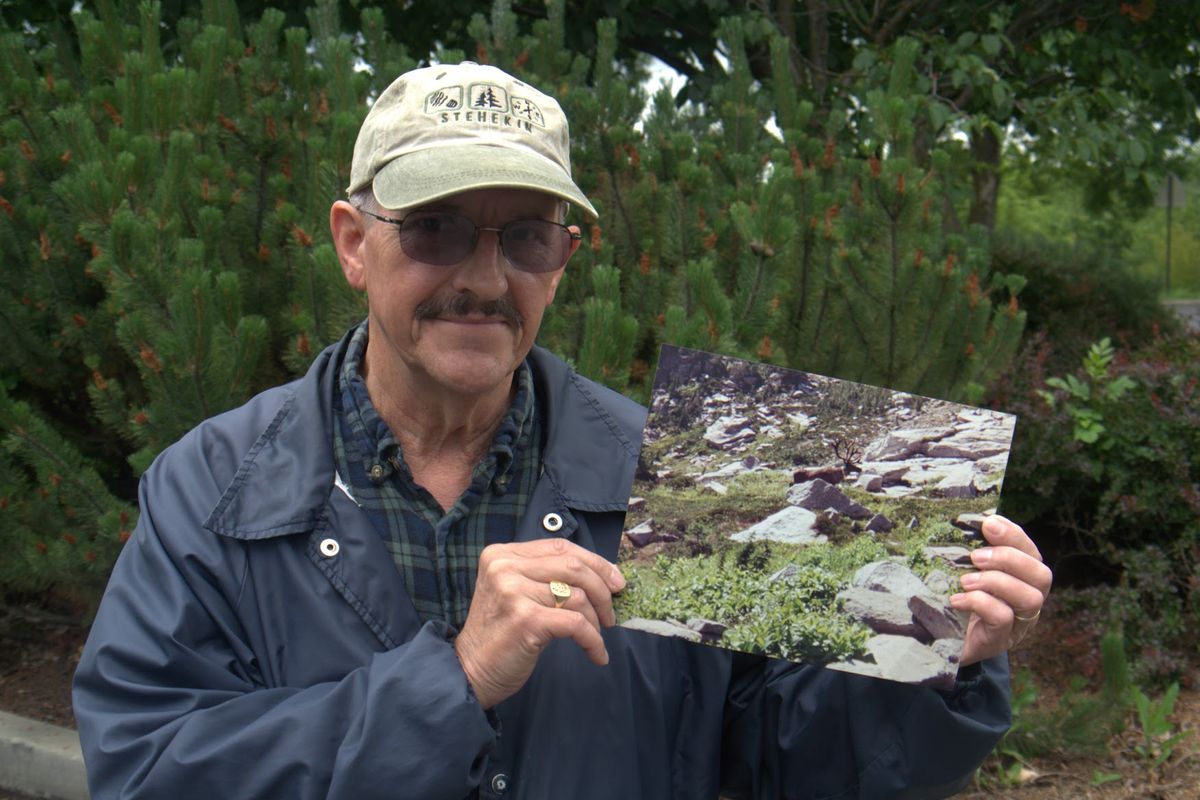Oral history project focuses on now-absent caribou in Idaho’s Selkirk Mountains

When in 2019 Canadian biologists captured the sole surviving member of a caribou herd that still occasionally wandered into Idaho, a species disappeared from the contiguous United States.
How long would it take the land and its animals, including humans, to forget about the so-called “Gray Ghosts?
That’s a question Jack Kredell and Christopher Lamb, both master’s students at the University of Idaho, are exploring via a multimedia website combining oral histories from biologists, conservation officers and about 20 residents who encountered the animals in the Selkirk Mountains.
Those interviews are available to read and watch. The location of each story and memory is tagged on an interactive map.
At the same time, the two English graduate students have deployed a number of game cameras that have captured video and photos of the animals that still live in the Selkirks.
“It’s to provide an image or a view of a landscape in the absence of mountain caribou,” Kredell said. “It is documentation of the landscape’s current inhabitants and how it’s all configured in their absence. The goal is to produce a negative image of (the area without) caribou.”
“We spent many hours in former caribou habitat, hanging and retrieving trail cameras that caught images and videos of animals currently living there that are connected to the extirpation of mountain caribou,” Lamb said.
Biologists and conservationists fought for decades to try and prevent that “negative image” from developing, to no avail.
Those efforts included an expensive multiagency and multinational effort to transplant caribou into the Idaho and Washington Selkirk Mountains in the 1990s and in 2012. A 2017 maternal penning effort by the Kalispel Tribe gained some traction with volunteers gathering lichen to feed the animals.
But habitat degradation from old-growth logging, climate change and increased predation decimated the species.
The Kalispel Tribe continues to support the Canadian-based Arrow Lakes Caribou Society with its maternal penning project, which is constructed and ready to house pregnant cows from the Central Selkirk herd, Kalispel tribal biologist Bart George said.
“Since the removal of the last few animals from the South Selkirk herd, the Central Selkirk’s are the nearest population,” he said in an email. “That group has been active with the penning project and partnering with the outdoor recreation industry there (primarily heli-skiing) to protect the herd from disruption. Meanwhile, the province has been working on cougar and wolf removal in the caribou habitat. The herd has shown a slight increase in population for the last two years, hopefully increasing neonatal survival will help move it in the right direction.”
Mountain caribou, unlike tundra caribou, use their wide feet to walk on top of deep snowpack. That allows them to reach lichen growing high on old-growth trees. The South Selkirk herd ranged through the high country along the crest of the Selkirks near the international border. The remaining 14 or so herds are all in Canada. It’s estimated that fewer than 1,400 mountain caribou are left in North America. Scientists believe caribou once roamed as far south as the Salmon River in Idaho.
When Kredell and Lamb first read about the demise of the mountain caribou in the U.S., they had some “dreams” of going into the Selkirks and finding tangible evidence of the caribou. Sheds – which are dropped antlers – perhaps.
But the rugged geography, combined with the unlikelihood of stumbling upon a shed, convinced the duo to look for a different kind of evidence.
“It dawned on us that stories and memories could also be understood as a form of material trace,” Kredell said.
Both want more people to contribute stories and memories to the project.
At the end of the day, they hope that seeing and hearing the stories highlight how entangled humans are with the landscapes we call home.
“It’s an attempt to represent space as something we’re all contributing to and that is unfolding,” Lamb said. “It isn’t finished or closed.”